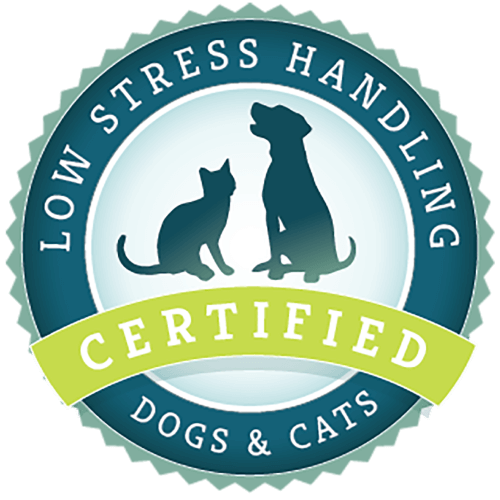What article are you looking for?
Recent Articles
Dog Class: Week 1 of our Family Fido: Training for People and Their Pooches Class
It’s week 1 of our quarterly 7-week dog class and we have some fun and exciting updates in store. First, this quarter two of our student employees, Lynna and Lauren, get to teach one exercise each week. That allows me and co-instructor, Melissa Morris, CPDT-KA, to assist with the demo so that there are more “demonstrators” for the participants to watch. It also allows us to test out our curriculum for training new instructors to teach our specific training program. As usual, the set of classes started off with our introductory workshop-game show. In this workshop, we find out about
Treat & Train® Allows Everyone to Train with Good Timing
When it comes to training our dogs, we all have some physical and coordination challenges at times. When you’re confined to a wheelchair those challenges can be amplified. It’s at those times that something like the Treat&Train®, remote controlled food reward device can come in handy. Just ask Ashley Anderson, a third year veterinary student from the University of Wisconsin School of Veterinary Medicine. “We got our St. Bernard puppy, Lucy, when she was 10 week old,” states Ashley, and we put her in puppy classes right away. She behaved very well for me. She was always eager to learn and
A Workshop for Reactive Dogs: It’s All About Technique and Timing
Once the owners have made the subtle but important changes to their technique and are getting better responses in their dogs, we work on using the exercises with distractions—the distraction that they actually react to OR any known distraction that they can handle. The goal is to present the distraction at a level that the dog-handler team can handle and then work in progressively more difficult distractions.
Creating the Perfect Puppy DVD: For Training Your Own Puppy As Well As Training Staff and Volunteers
What do you need to do to create a perfect puppy or to fix the problem one in under a month? Find out in just 90 minutes in this new lecture DVD by Dr. Sophia Yin. Then train your staff using the DVD and support materials so that they can help clients and future puppy adopters to be successful. Play the DVD in puppy class orientations so that participants know what to expect. Show the DVD to foster puppy raisers so they prepare puppies behaviorally for their next home. It’s the easiest, most efficient way to get everyone up to speed on
Karen Pryor Academy: The Most Efficient Path to Becoming an Animal Trainer
Veterinarians, technicians and other dog enthusiasts often ask me about the most efficient way to learn about animal training or to become a trainer. Currently, my best recommendation is the Karen Pryor Academy and others agree. Just ask veterinary technician Debbie Martin, a KPA graduate and co-author of Puppy Start Right: Foundation Training for the Companion Dog. Martin was no beginner when she took the KPA trainer course in 2008. She had been teaching puppy socialization classes in the veterinary hospital where she was employed starting in 1997 and, for three years, she had been the animal behavior technician for Veterinary Behavior Consultations,
Common Questions about the Treat & Train®: How a Corgi Taught Her Owners How Valuable This Tool Can Be
When people hear about the Treat&Train®, they frequently ask similar questions. How can the Treat&Train help me train my dog to be calm? Why would I want to use a machine to deliver treats instead of giving them myself by hand? Can I use the device if I have multiple dogs in the house? Here’s one set of pet parents to a spunky Pembroke Welsh Corgi who learned the answer to all three of these questions when they tried the Treat&Train® with their high energy pup. “We have a high-energy dog who had trouble calming down, states owner Jennifer Lundmark.
Looking for certifications instead?

Low Stress Handling® Silver-Level Certification
Individual Certification at this level demonstrates to clients and employers the individual’s dedicated interest in Low Stress Handling®. Hospital Certification at this level demonstrates to clients and staff the hospital’s commitment to appropriately training staff in Low Stress Handling® methods.
Learn More
